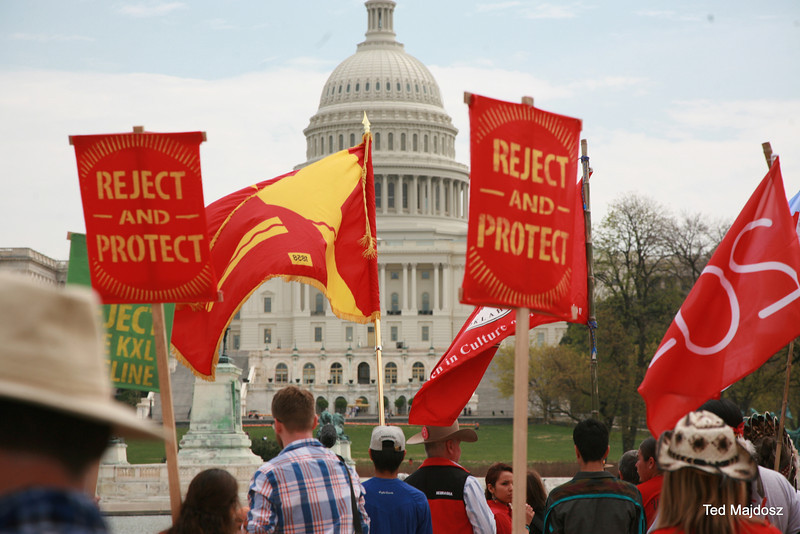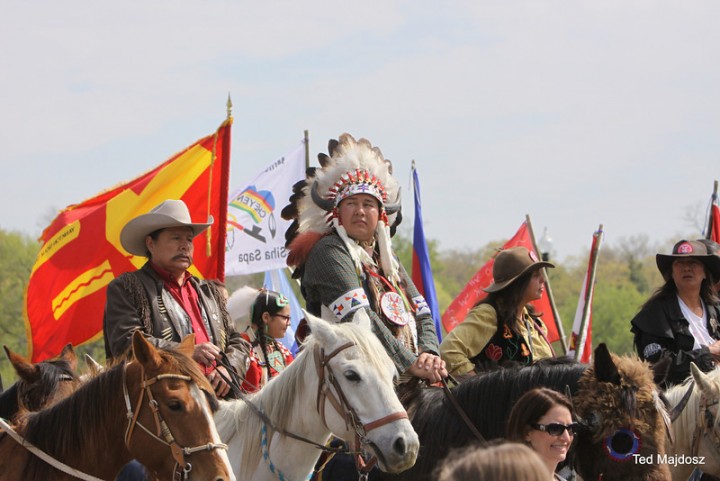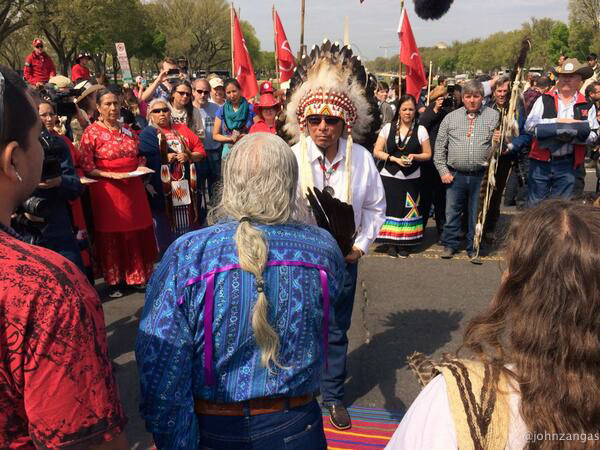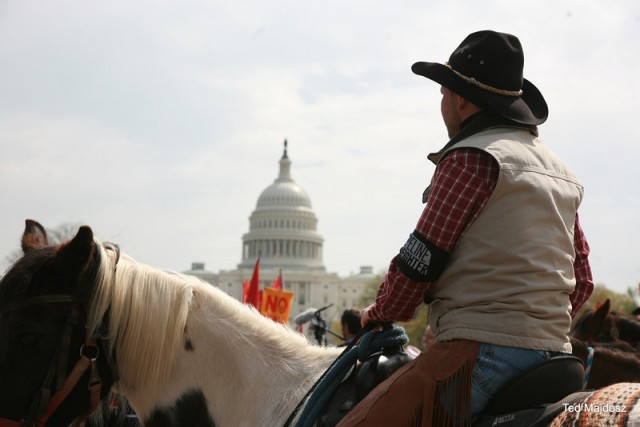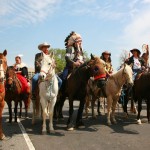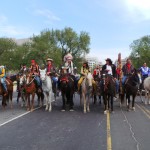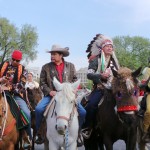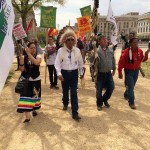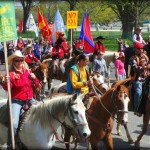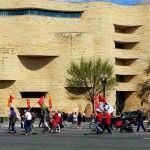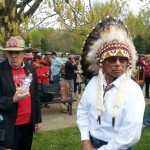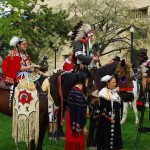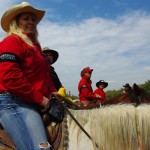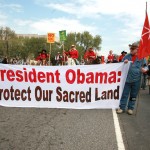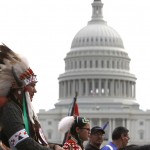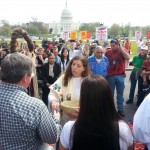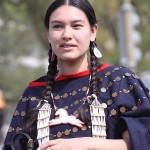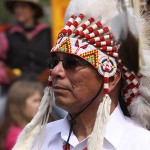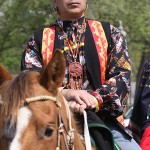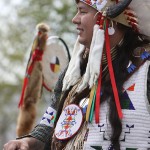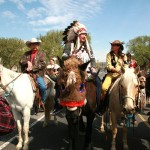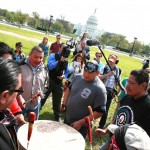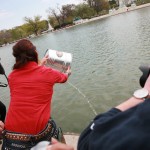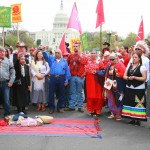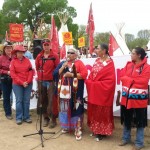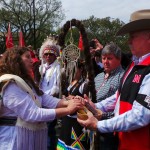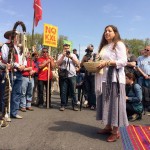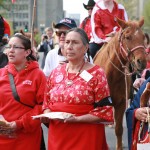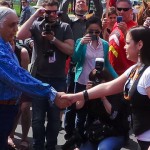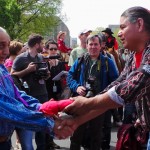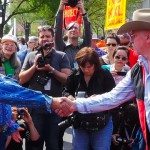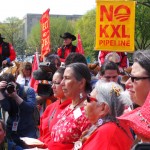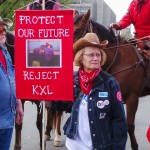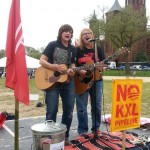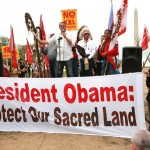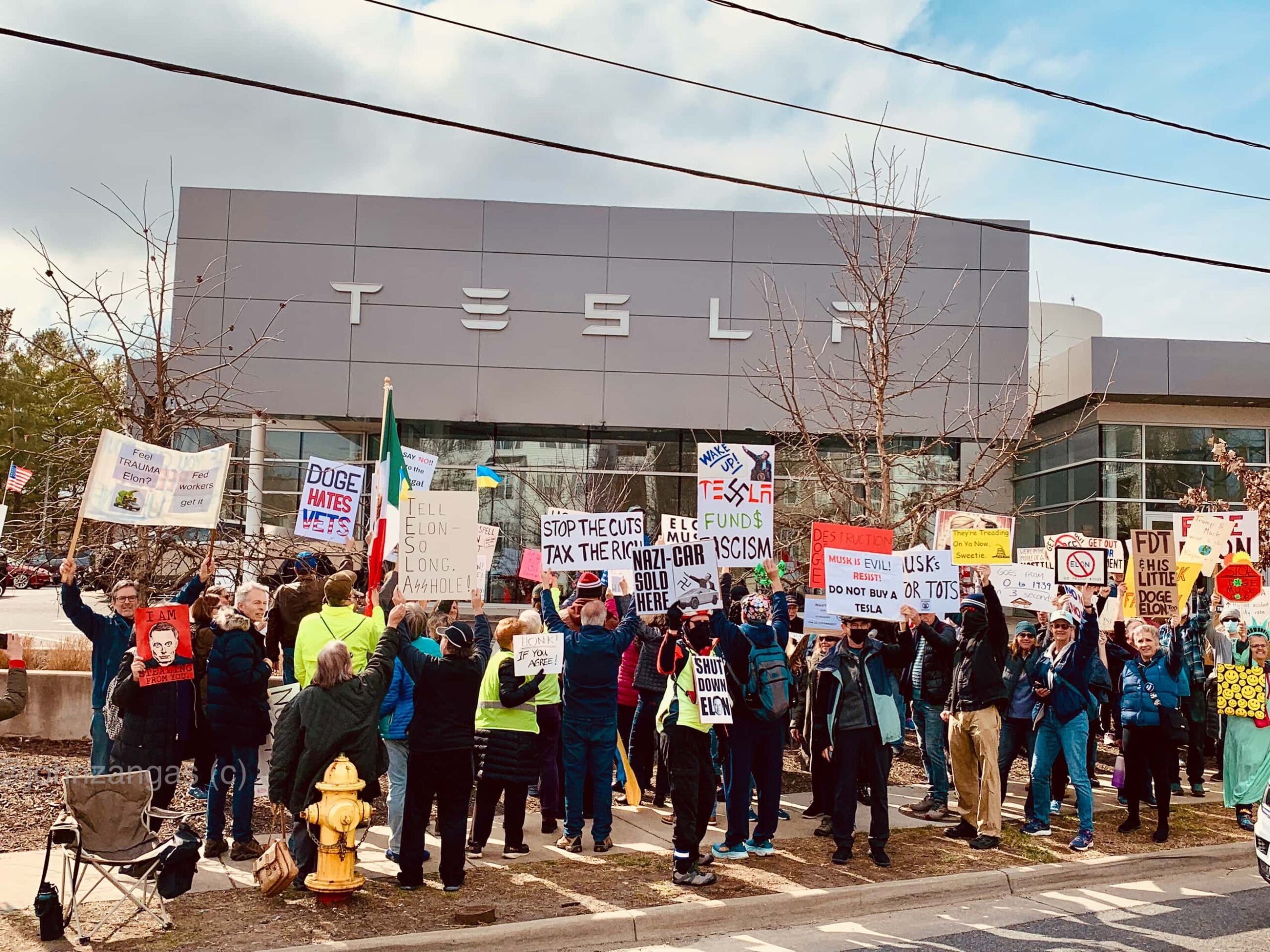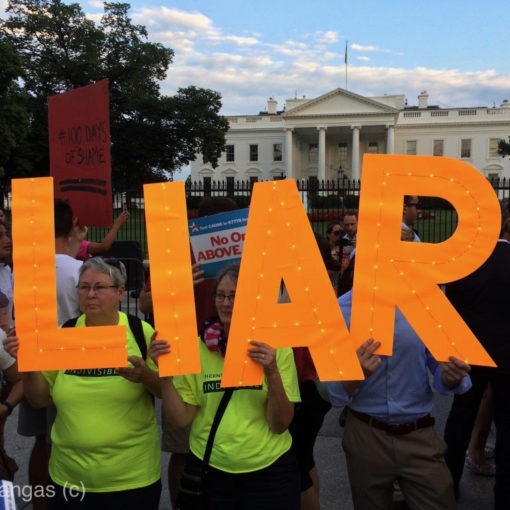The Cowboy Indian Alliance marked the first day of the “Reject and Protect” encampment on the National Mall today with prayer ceremonies and offerings to each other, the Earth and its people.
With prayer, songs and burning sage, Native Americans dressed in full tribal regalia along with ranchers and farmers who had traveled to Washington from the U.S. “Heartland” officially kicked off the six-day protest against the Keystone XL pipeline.
The elder representatives from a dozen tribes rode on horseback with ranchers and farmers to the Capitol Reflecting Pool. They faced West as they lay four rocks on a black cloth and prayed while singing in their native language. Billy Tayak, Chief of the Piscataway tribe which originally inhabited what is now Washington, DC, accepted gifts as ceremonial request for permission to be on his land. Tribal leaders and representatives of ranchers and farmers offered produce from their lands, such as wheat and vegetables–even pickles.
Their message to President Obama and their state legislatures: reject the Keystone XL pipeline project.
“The Keystone pipeline is the main focus,” said Jeff Horinek of the Ponca Nation. “We depend on water, and a lot of the country’s produce comes from the heartland of the country.” Horinek said the Keystone XL pipeline would run directly across from his home. He plans to leave if it is approved.
John Harter, a cattle rancher from South Dakota said that he was one of the last holdouts against making an agreement with TransCanada to give up his land rights. His family has owned their farm since 1939. He joined the Reject and Protect demonstration because he felt he had been “strong-armed” by TransCanada. “They came in and told me they were gonna take my property rights,” he said. “What gives them the right to put a pipeline across my land?”
Harter fought back and is challenging the TransCanada easement. “I’m happy the Native Americans are in this fight,” he said. “That’s where the real strength is. They have powers of a sovereign nation. Me as a rancher, I don’t have that power.”
“Treaty Rights supersede state rights,” said Dallas Goldtooth of the Dakota Tribe from Minnesota. “The treaties we signed with the U.S.Government we hold as sacred,” he said. Goldtooth believes it is important for his people to resist as a peaceful and collective people. “There was very little prior consultation or consensus with tribes about the Keystone,” said Goldtooth.
Art Tanderud, a farmer from Nebraska, joined the coalition because the proposed route of the pipeline will cut through one-third of his farm, which has been in his family for 100 years.
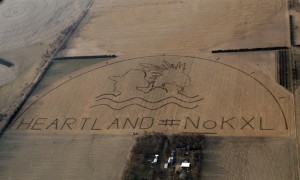 Tanderud allowed his farm to be the site of crop art created by John Quigley, an artist from California. “He cropped an anti-pipeline through one of my corn fields which had already been harvested,” Tanderud said. The farmer felt so passionate about the pipeline that he had no problem allowing the artist on his land. “We live on an area right on the Ogallala aquifer,” he said. “If it spills in the aquifer, there is no way they can clean it up,” he said.
Tanderud allowed his farm to be the site of crop art created by John Quigley, an artist from California. “He cropped an anti-pipeline through one of my corn fields which had already been harvested,” Tanderud said. The farmer felt so passionate about the pipeline that he had no problem allowing the artist on his land. “We live on an area right on the Ogallala aquifer,” he said. “If it spills in the aquifer, there is no way they can clean it up,” he said.
Chief John Spotted Tail of the Dakota tribe believes there is no second chance if the pipeline goes through tribal territory. “Pipelines break,” he said. “I know a lot of the ranchers, and it’s good to see they’re all standing up for a cause.”
- Photo by @UntoldCarlisle
- Photo by @UntoldCarlisle
- Photo by Rob Brune
- Photo by Rob Brune
- Photo by Mark Hefflinger, Bold Nebraska
- Photo by Mark Hefflinger, Bold Nebraska
- Photo by Rob Brune
- Photo by Rob Brune
- Photo by @UntoldCarlisle
- Photo by @UntoldCarlisle
- Photo by @UntoldCarlisle
- Photo by @UntoldCarlisle
- Photo by @UntoldCarlisle
- Photo by @UntoldCarlisle
- Photo by @UntoldCarlisle
- Photo by @UntoldCarlisle
- The Indigo Girls/Photo by Rob Brune

